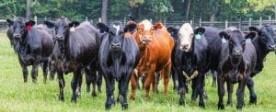By Andrea Osorio-Doblado and Darren D. Henry
Tannins can be perceived as “antinutritional factors” in ruminant diets. Indeed, they are; however, when they are provided from low to medium concentrations (< 50 g/kg DM) tannins can improve utilization of feed protein without impairing feed intake or carbohydrate digestibility and there is a potential to also decrease enteric methane emissions from livestock. Tannins can increase the quantity of dietary protein, especially essential amino acids, flowing to the small intestine. This is of high value because protein is usually the most expensive component in ruminant diets.

Tannins can be perceived as “antinutritional factors” in ruminant diets, however, when provided in low to medium concentrations tannins can positively influence animal performance.